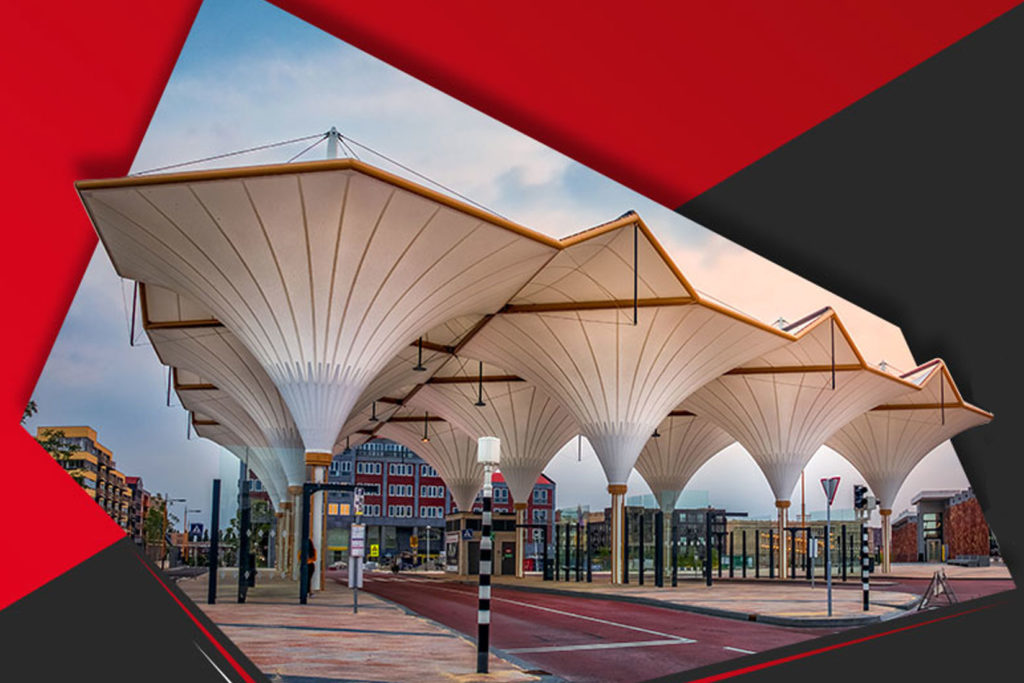Benefits of Choosing a Tensile Membrane Structure for Roofing Applications

A tensile structure, which is an arrangement with the capability of being stretched or drawn out, is one that has tension and hence, not liable to compress or bend. Tensile membrane structures are optimally used as a roof as it can cover an expansive area easily.
History of tensile fabric structures
While generally, tents have an age-old past, contemporary fabric structure technology dates back to the relatively recent 19th century. As far back as the times when the Mongols swept the plains with their makeshift accommodation right down to the Bedouins, the versatile tensile structure has been in use. Moving forward, even the Romans covered their famed Colosseum with massive canopies for the safety of the audience. Through the years, tension architecture was primarily consigned to circus tents, suspension bridges or even provisional pavilions.
The age of Robert Le Ricolais [1894 – 1977]
Largely regarded as the ‘Father of Spatial Structures’, the multitalented Ricolais worked as a mathematician and architect. His mind was as vast as the spaces he envisioned. He carried out numerous projects for over a decade between 1940 & ’50 that encompassed summer camps, aviation hangars, factories and exhibition halls, to name a few.
The Minimal Art of Tensile Membrane Structures
While designing a building, the onus of designing the layout, geometry and materials lie mostly on the architect. Setting his ideas to paper, he drafts sketches that best align with client requirements. He chooses orthodox elements and structural forms to finally erect an enclosure. The beauty of a tensile membrane structure lies in its simplicity, notwithstanding the number of variations and possibilities that it comprises.
How has tensile architecture gathered momentum?
Today, architects have switched over to tensile architecture especially for roofing applications. A few of the reasons for its popularity are listed below.
Solar Properties: When used outdoors, a multi-layer tensile structure can keep the area cooler and it helps in reducing heat.
Fire-safe: Almost all structural fabrics are flame retardant. Worldwide, the fire coding system checks on flammability, flame propagation or smoke.
Low maintenance: Ideally tensile materials & byproducts need to be annually maintained for its usage over an extended period of time. They require minimal maintenance as against an erected building or structure.
Cost benefits: Tensile structures are arguably low cost as against any conventional structure. It’s also reusable in certain cases and can be used to create multiple elements.
Durability: If maintained properly with annual maintenance, tensile architecture can be played out over a longer period.
Flexible design aesthetics: Any structure can be custom-built as per specifications and provide the richness and aura as per requirement. Most materials are translucent to light that in turn, deliver an excellent finish.
Acoustic: In recent years, technical fabrics have been created that help in reducing mid to high-level frequency.
Lightweight: Due to its light weight, it requires minimal structural steel, thereby reducing overall costs.
Translucent: Due to this property, tensile structures in roofs invite natural light during day time, while at nights can light up with infused artificial lights.
Sample materials for tensile roofing: PVC/ PVDF Coated Polyester Fabrics, PTFE coated fiberglass fabrics, ETFE film, Silicone coated Glass fabrics, to name just a few.
Eco-friendly: Most fabrics in use today for tensile architecture can be recycled.
Indoors: Although tensile membrane architecture is predominantly used for the outdoors, it can even be used for sunshades, screens and ceilings.

